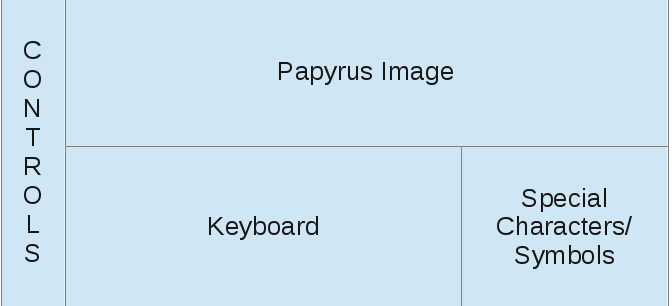There is an excellent example of a transcription interface at: http://ancientlives.org/tutorial/transcribe. A screen shot won’t display well but I can sketch the general form of the interface:

A user selects a character in the papyrus by “clicking” on its center point. That point can be moved if need be. The character will be highlighted and you then select the matching character on the keyboard.
There are examples of the instructions that can be played if you are uncertain at any point.
I can’t imagine a more intuitive transcription interface.
I have suggested crowd sourcing transcription of the New Testament (and Old Testament/Hebrew Bible as well) before to groups concerned with those texts. The response has always been that there are cases that require expertise to transcribe. Fair enough, that’s very true.
But, with crowd transcription, we would be able to use the results of hundreds if not thousands of transcribers to identify the characters or symbols that have no consistent transcription. Those particular cases could be “kicked up stairs” to the experts.
The end result, assuming access to all the extant manuscripts, would be a traceable transcription of all the sources for the New Testament back to particular manuscripts or papyri. With all the witnesses to a particular character or word being at the reader’s fingertips. (Ditto for the Old Testament/Hebrew Bible.)
We have the technology to bring the witnesses to the biblical text to everyone who is interested. The only remaining question is whether funders can overcome the reluctance of the usual suspects to granting everyone that level of access.
Personally I have no fear of free and open access to the witnesses to the biblical text. As a text the Bible has resisted efforts to pervert it meaning for more than two (2) thousand years. It can take care of itself.